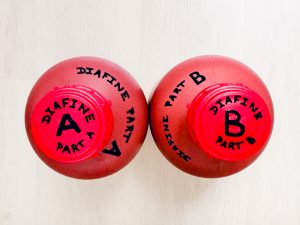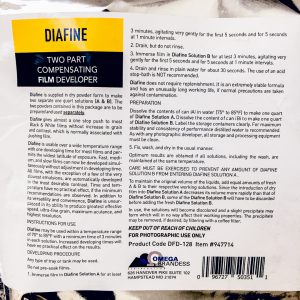This compensating developer in two parts has an excellent reputation, particularly when used with Kodak Tri-X. The idea is to develop shadows and highlights somehow “separately” (gross shortcut here as I can’t explain the compensating effect now). I will certainly come back to that in a proper blog post.
One gallon kit
The two parts should always be separated, never mixed nor contaminated by one another.
What’s inside the kit
So it’s quite important, at least for “clumsy-me”, to properly label my chems cans on all sides, including the srew caps as they can be confused easily.
It’s a recipe from the USA and so all their measures are closely related to the Imperial system and obviously this joke is far from being Metric compliant… So we end up with gallons in place of liters, not really ideal for cans and bottles in our supposedly dominant Metric system… In my case I have the one gallon kit which is 3.7854 litres quite a lovely round number innit? So what do I do with my cans standardised on round liters volumes? Oh! I went eventually for 5 litres Riviera cans, I know it’s stupid, all these different standards really get on my nerves…
But be careful when mixing the chems with water as there are some wrong/contradictory instructions on this one gallon kit. Indeed it’s written to dissolve the content of each bag to make one quart of solution (and yes a quart is a quarter of a US gallon and not a quarter of a liter…). Anyway! it’s wrong, we should dissolve the chems to make a US gallon of solution. Ah! yes, US gallons are not even the same as english gallons! Seriously, what a mess…
Metric system boys! it’s not that hard!
Anyways, here are the suggested Exposure Index (click on the image to enlarge) not too shabby!













You should dissolve to obtain a concentrate. You can that further dissolve to a working solution. I guess you can also use the concentrate as a replenisher.
Thanks, I went for the working solution directly